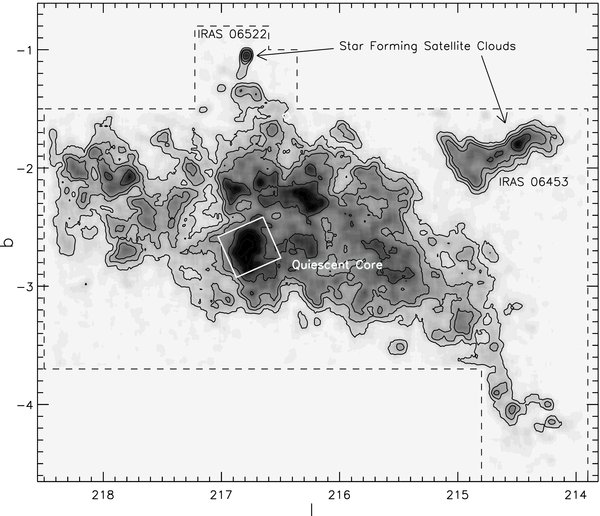
Detection of Star Formation in the Unusually Cold Giant Molecular Cloud G216-2.5
Abstract
The giant molecular cloud G216-2.5, also known as Maddalena’s cloud or the Maddalena-Thaddeus cloud, is distinguished by an unusual combination of high gas mass (1-6 x 10^5) solar masses, low kinetic temperatures (10 K), and the lack of bright far infrared emission. Although star formation has been detected in neighboring satellite clouds, little evidence for star formation has been found in the main body of this cloud. Using a combination of mid-infrared observations with the IRAC and MIPS instruments onboard the Spitzer space telescope, and near-IR images taken with the Flamingos camera on the KPNO 2.1-meter, we identify a population of 41 young stars with disks and 33 protostars in the center of the cloud. Most of the young stellar objects are coincident with a filamentary structure of dense gas detected in CS (2-1). These observations show that the main body of G216 is actively forming stars, although at a low stellar density comparable to that found in the Taurus cloud.